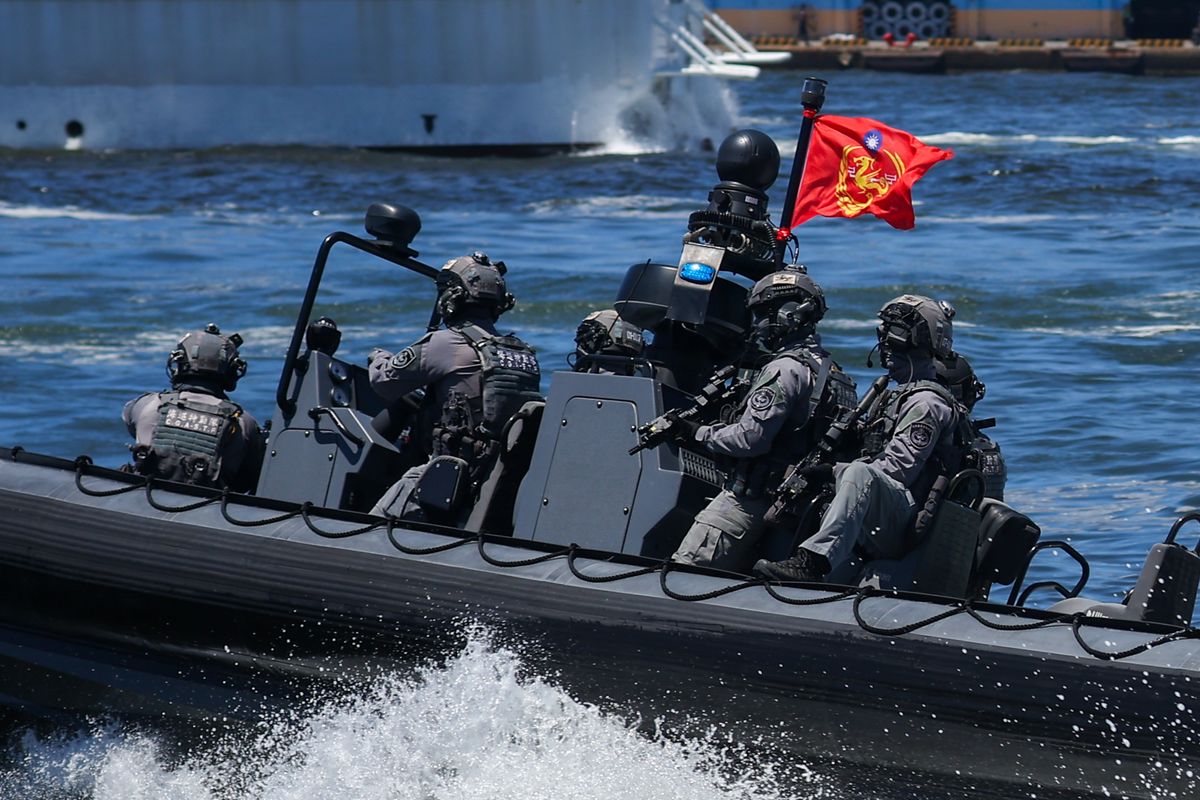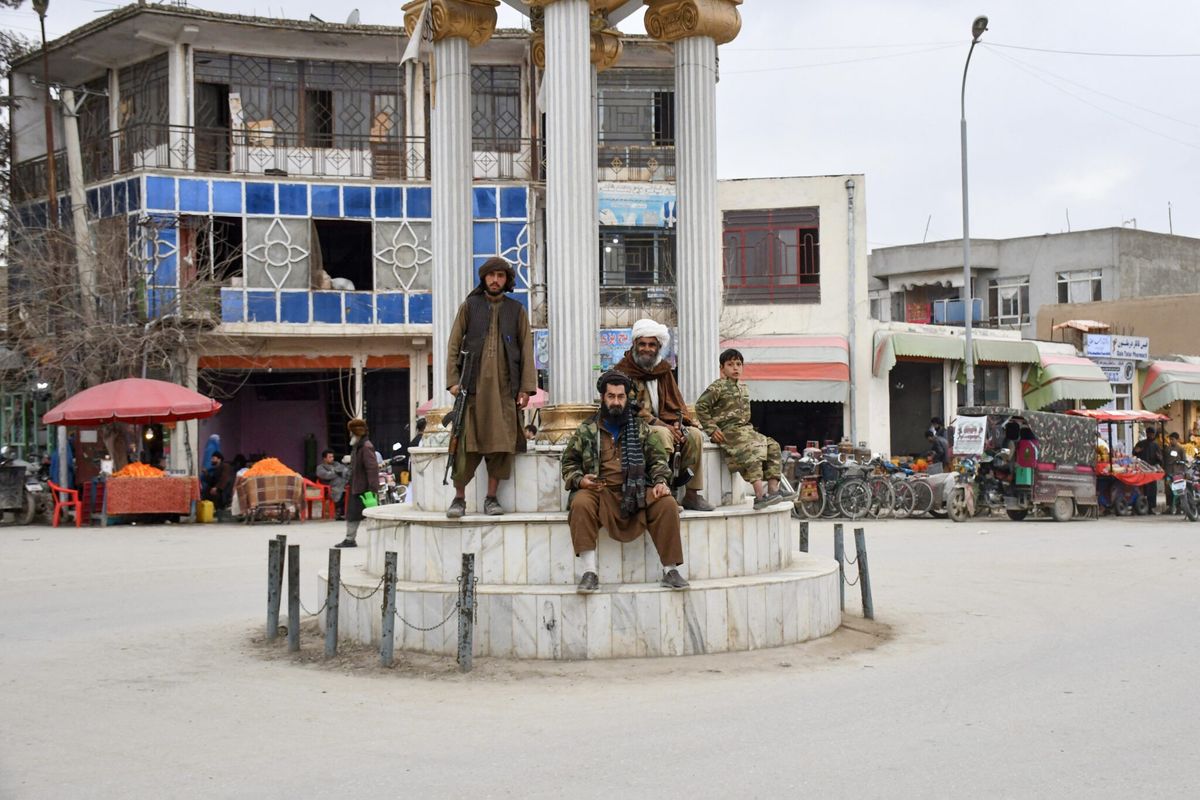Pulitzer Prize Winning Journalist Walter Pincus is a contributing senior national security columnist at The Cipher Brief. He spent forty years at The Washington Post, writing on topics from nuclear weapons to politics. He is the author of Blown to Hell: America’s Deadly Betrayal of the Marshall Islanders (releasing November 2021)
OPINION — While most Americans today are focused on the U.S. debacle in Afghanistan, the Pentagon is in the midst of carrying out its first-ever, worldwide military exercise, designed to “display abilities to employ precise, lethal and overwhelming force globally across three naval component commands, five numbered fleets and 17 time zones,” according to an August 10, Indo-Pacific Command press release.
Called Large Scale Global Exercise 21 (LSE 2021), it has been five years in the making and is being conducted live and virtual, using new joint operating concepts by Navy and Marine personnel from U.S. Fleet Forces, U.S. Pacific Fleet, Naval Forces Europe, and Marine Expeditionary Forces in the Pacific, Atlantic and Europe. The largest set of naval and amphibious exercises since the Cold War, LSE 2021 is “signaling to our competitors [that] the U.S. military remains ready at the high–end of warfare expressly because of its global operational commitments, rather than in spite of them,” according to a July 27, Sixth Fleet press release.
Those words have an ironic ring today in the face of pictures from Kabul’s airport of Afghans hanging on to U.S. aircraft as they attempt to depart the country.
While many analysts are claiming the Afghan failure will now raise questions about America’s military capabilities and staying power, the U.S. as well as its major strategic competitors, Russia and China, are actually in daily low-level combat, not only in the cyber domain, but also in continuous military exercises carried out not just virtually but most also with live fire. As with the current U.S. LSE 2021, these exercises are watched closely by competing services because they project military strength and score diplomatic points. As I show below, China has already paid attention to LSE 2021.
Yesterday, the U.S. and South Korea began a joint computer-simulated military exercise, which normally would see thousands of troops in the field. The South Korean Joint Chiefs said Sunday the exercises will continue for nine days but will primarily be defensive in nature with minimum personnel and no live field training. Despite its limited nature, North Korea’s Kim Yo-Jong, sister of Supreme Leader Kim Jong-un warned against staging it, and Chinese Foreign Minister Wang Yi described the exercise as not constructive during the ASEAN Regional Forum on August 9.
Last Friday, China and Russia ended their own five-day joint strategic exercise in Northwest China called Zapad/Interaction-2021. “More than 10,000 personnel participated in the exercise, which is themed to jointly safeguarding regional security stability in anti-terrorist combat,” according to China Central Television (CCTV). Chinese and Russian troops used a specially designed joint command system for the first time, which interconnected both sides' combat systems, enabled teleconferences and the transfer of combat documents, CCTV reported. Chinese Defense Minister Wei Fenghe and Russian Defense Minister Sergei Shoigu attended live-fire drills Friday. After joint talks, Shoigu said Russia was “willing to strengthen strategic communication with China, [and] deepen cooperation in areas such as counter-terrorism,” the Chinese Defense Ministry announced.
The Chinese-Russian exercise may reflect both countries’ concerns over the results of the withdrawal of U.S.-led forces from Afghanistan. They may fear increased Islamic terrorist issues for Moscow and Beijing which both share borders with what will now be an aggressive Sunni Islamic country. Central Asian Islamists have already caused internal issues for Russia, and China’s Uyghurs have in the past, received aid from Afghans who live just across the border. Russia and China have carried out bilateral as well as multilateral military exercises since 2005.
The Cipher Brief hosts private briefings with the world’s most experienced national and global security experts. Become a member today.
The U.S. LSE 2021 set of global exercises began on August 2 will run through August 27. The first two weeks primarily involved 25,000 American Navy and Marine elements and was “designed to refine how we synchronize maritime operations across multiple fleets in support of the joint force. The scenario for those weeks included “a buildup of tensions into a crisis and the eruption of war, in such a way that forces in the Atlantic, Pacific and Europe all have to sense their environments, track potential threats and communicate to the four-star commander about how they are seeing the crisis unfold from their vantage points,” according to Defense News.
“The training is based on a progression of fleet battle problems and scenarios that will assess and refine modern warfare concepts, including distributed maritime operations, expeditionary advanced base operations, and littoral operations in a contested environment,” according to an August 3 release from U.S. Fleet Forces command.
One example of the virtual global reach of the exercise sees the guided-missile cruiser USS San Jacinto, pier side at Norfolk, participating under the command of U.S. Sixth Fleet thousands of miles away and operating virtually. Sailors on the San Jacinto are making decisions in the cruiser’s combat information center in Norfolk that determine the fate of a simulated carrier strike group off Norway in this exercise, according to an August 9, USNI News story.
The LSE 2021 also has maritime activities going on in the South China Sea, conducted by U.S. Indo-Pacific Command. They incorporate U.S. Army, Air Force, Navy, and Marine Corps forces, alongside elements from the United Kingdom, Australia and Japan. On August 8, a Naval Surface Action Group (SAG) made up of the littoral combat ship USS Tulsa, guided-missile destroyer USS Kidd and an Explosive Ordnance Disposal Mobile Unit detachment were joined together in the South China Sea as part of LSE 2021. Their capabilities “enabled the fleet commander to execute a full spectrum of maritime and theater littoral warfare operations, on, above and below the water,” according to a Navy press release.
The American LSE 2021 force also included the aircraft carrier USS Carl Vinson and ships assigned to its Strike Group, the guided-missile cruiser USS Lake Champlain and guided-missile destroyers USS Chafee and USS Stockdale. The aircraft carrier strike group began its LSE 2021 operations with a coordinated, long-range, maritime strike exercise.
On July 27, the United Kingdom’s new aircraft carrier, HMS Queen Elizabeth, passed through the South China Sea, accompanied by the American USS The Sullivans guided-missile destroyer and Royal Netherlands Navy HNLMS Evertsen frigate. Ten U.S. Marine Corps F-35B warplanes are deployed aboard the British carrier, based on an agreement between the two countries to integrate operations of their carriers. While the HMS Queen Elizabeth was in the South China Sea, at least eight of those U.S.-piloted F-35Bs was launched into the air along with vertical landing (STOVL) stealth fighters from the U.K. Royal Air Force.
The Chinese more than once spoke out publicly. “The Chinese People’s Liberation Army (PLA) will stand ready to deal with any improper acts by the UK warships and see their South China Sea tour as a chance for practice,” wrote the Communist Party-controlled Global Times. “In the South China Sea, the HMS Queen Elizabeth took the most direct route across the contested waterway, from Singapore to the Philippine Sea, and did not enter the territorial seas or baselines around any Chinese-claimed islands,” according to the Asia Maritime Transport Initiative.
However, as the British carrier entered the South China Sea, the Chinese carrier Shandong appeared some 580 nautical miles to the northwest south of Hainan Island, where it is home-ported at the People’s Liberation Army Navy base.
On Saturday August 7, China began a five-day naval exercise in a restricted zone of the South China Sea near the Paracel islands which are claimed by both China and Vietnam. The observers said the exercise resembled drills conducted last year in which the Chinese reportedly conducted live-fire "aircraft carrier killer" anti-ship ballistic missile exercises.
The HMS Queen Elizabeth, which stopped off in Guam for some crew changes, will now take part in a series of exercises with forces from the U.S., Australia, France, Japan, New Zealand and Korea in the Philippine Sea where the scenario appears to be protection of Taiwan’s eastern coast from a Chinese invasion force.
One of the most interesting military exercises is scheduled to begin September 13, when Taiwan stages its Han Kuang annual live-fire exercise after the conclusion of the American LSE 2021. The exercise, which involves all branches of the Taiwan military “will simulate a scenario in which Taiwan’s military and civilian airports and airstrips are seriously damaged by enemy fire, and jets have to land on the highway,” according to an August 10, story in the South China Morning Post. The story quoted Taiwan General Major General Lin Wen-huang, director of the defense ministry’s operations and planning office, saying, “A test of emergency take-offs and landings of fighter jets on the Jiadong wartime runway – a major element of the exercise – will be conducted as planned.”
While military exercises, both virtual and live fire, continue to be useful tools, the reality of Afghanistan experience supports Carl Von Clausewitz’s words, “War is the realm of uncertainty; three-quarters of the factors on which action in war is based are wrapped in a fog of greater or lesser uncertainty.”
Read more expert-driven national security insight, perspective and analysis in The Cipher Brief











